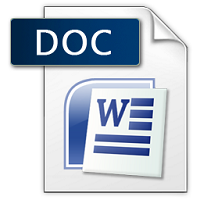₹198.00
Scroll down for Match your questions with Sample
Note- Students need to make Changes before uploading for Avoid similarity issue in turnitin.
Another Option
UNIQUE ASSIGNMENT
0-20% Similarity in turnitin
Price is 700 per assignment
Unique assignment buy via WhatsApp 8755555879
Description
| SESSION | September 2023 |
| PROGRAM | BACHELOR of COMMERCE (B COM) |
| SEMESTER | III |
| course CODE & NAME | DCM2103 – Cost Accounting |
| CREDITS | 4 |
| nUMBER OF ASSIGNMENTS & Marks | 02
30 Marks each |
Set – 1
Questions
- A. Discusstheclassificationof cost on the basis of behaviour.
Ans:
Classification of Costs:
Costs incurred can be grouped according to some common characteristics.
Most popularly used classification of costs is as follows (detail explanation in the next chapter):
- Based on the nature of time period like Historical Costs, Pre determined Costs
- Classification
Its Half solved only
Buy Complete from our online store
https://smuassignment.in/online-store/
MUJ Fully solved assignment available for session SEPT 2023.
Lowest price guarantee with quality.
Charges INR 198 only per assignment. For more information you can get via mail or Whats app also
Mail id is aapkieducation@gmail.com
Our website www.smuassignment.in
After mail, we will reply you instant or maximum
1 hour.
Otherwise you can also contact on our
whatsapp no 8791490301.
- Explain the causes of labour turnover.
Ans:
Causes of labour turnover:
The three categories below can be used to group the primary causes of labour turnover in an organisation or sector:
- Personal Causes
- Unavoidable Causes, and
- Avoidable
- The following information is in respect of Material.
Re-order quantity = 6000 units
Re-order period = 8 – 12 weeks
Maximum Consumption = 1600 units per week
Normal consumption = 1200 units per week
Minimum consumption = 1000 units per week
Emergency Re- order period = 4weeks
Calculate: (a). Re-order level (b) Minimum Level (c) Maximum Level (d) Average stock level (e) Danger Level
Ans:
To calculate various inventory levels, we can use the following formulas:
Re-order Level (ROL): = Maximum Consumption × Re-order Period ROL=Maximum Consumption×Re-order Period
Minimum Level (
- a. Discuss the various sources from where information of overheads can be collected?
Ans:Collecting information about overheads is essential for cost accounting and managerial decision-making. Overheads represent indirect costs that are not directly attributable to a specific product or service.
Here are
Set – 2
Questions
| M Ltd. produced and sold are 5000 units @ ₹ 50 per unit. From given data prepare cost sheet with per unit. | |||
| Particulars | Amount | Particulars | Amount |
| Direct Material | 100000 | Office Rent | 6000 |
| Direct Wages | 25000 | Direct Expenses | 10000 |
| Office Stationery | 1000 | Wages Of Foremen | 8000 |
| Telephone Charges | 250 | Director’s Fees | 2600 |
| Advertising | 3500 | Depreciation-Factory | 4000 |
| Factory Rent | 17000 | Carriage Outwards | 750 |
| Factory Lighting | 3000 | Salesmen’s Salary | 2500 |
| Depreciation-Office | 2400 | Oil & water | 1000 |
Ans: It appears you have a list of expenses categorized into direct and indirect costs. Let’s organize these expenses into different categories to understand their classification better:
Direct Costs:
Direct Material: ₹100,000
Direct Wages: ₹25,000
Office Stationery: ₹1,000
Telephone
5 a. Explain the advantages of cost accounting.
Ans: Here are some advantages of cost accounting:
Cost Control: Cost accounting helps in controlling costs by establishing standards, comparing actual costs with standards, and identifying variances. This enables management to take corrective actions to control costs and improve efficiency.
Cost Planning: It aids
- Q Ltd. produces a product involving 2 distinct processes of manufacture. The identical units are introduced in process A and the entire output is transferred to process B.
From the following particulars prepare the relevant process accounts.
| Particulars | ₹ |
| Materials | |
| Process A (10560 units introduced) | 395925 |
| Process B | 83415 |
| Direct Labour | |
| Process A | 94500 |
| Process B | 198000 |
There was no opening or closing stock in process A and process B. Works overheads are absorbed @ 40% of Direct labour in all processes. There were no spoiled units in any process.
Ans:To prepare the relevant process accounts, we’ll create two accounts: one for Process A and another for Process B.
- a. Explain operating costing its features.
Ans:Operating costing is a form of service costing that is applied to industries where the output is not homogeneous and cannot be expressed in terms of units. It is particularly suitable for businesses involved in providing services or producing customized products where the production process is
- Explain any 5 reasons for differences in profit as per costing records and financial records.
Ans: Here are five common reasons for such differences:
Treatment of Fixed and Variable Costs:
Costing Records Perspective: Costing records often distinguish between fixed and variable costs for the purpose of product costing. Fixed costs may be absorbed based on a predetermined absorption rate, and variable costs are directly attributed to units produced.
Financial Records


